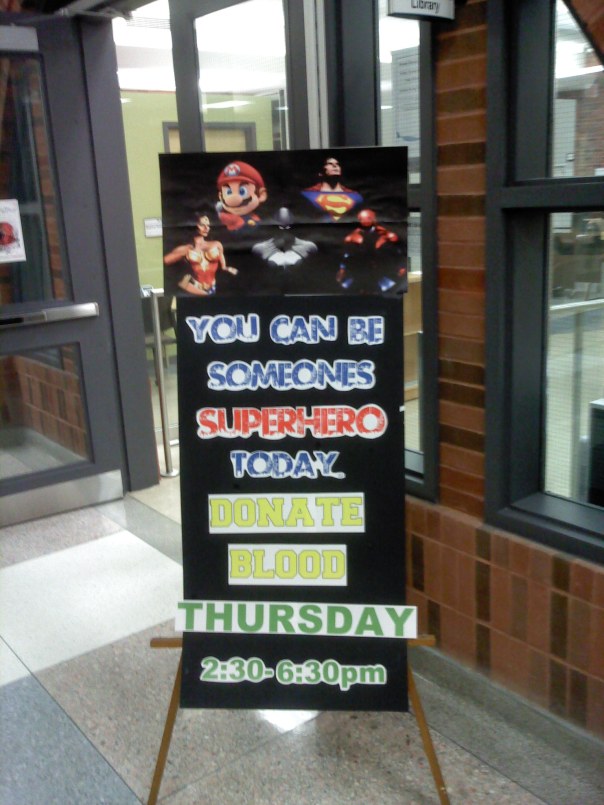Introduction
“You feel like you’re split down the middle. Your right arm wants to unbutton your shirt while your left arm is trying to keep your shirt on. You’re torn between wanting to kill everyone in the room, or buying ‘em all another round of drinks” (Howe Spider 245).
This is a quote from Leanne Howe’s short story called “An American in New York.” It’s a story about a half-white, half-First Nations woman going to New York in the late 1980s, I believe. These words are her thoughts on being a “half-breed” as she calls herself, but these words have caught be and stuck in my head since I first heard them in my first year English class.
I suppose the reason for this is not because I’m bi-racial (though I am gay), but because I’ve been an outsider all my live, whether it be in school or at home, I’ve always been the black sheep or, as I once stated in a elementary school assignment, “I feel both invisible and like a raven in a flock of pigeons, at the same time”, to which my parents responded, “Oh, everybody feels like that sometimes.” Is it believable that that didn’t make me feel any better?
Anyway, I told my seminar group how much this quote related to be and about being an outsider and, once in the lecture hall, the professor walked up to me and asked, “In what ways are you an outsider?”
I responded by saying that I had always felt different than everyone else and generally out of place.
To which she responded by saying, “Oh, so it’s just self-imposed, then?” and walked away.
This almost through me for a loop and I imagine that a lot of queer people have been told something similar as of recently because of the fact that queer identity has been something of a hot-button issue and has been a major topic of decision for the last little while, especially because of the recent presidential election.
I’m sure that there are many queer people have heard this sort of line at some point, “What’s the big deal? Isn’t the whole ‘gay rights’-thing over with now? I mean, you have the right to marry!”
The truth is that there are still many problems and many issues that still need to be addressed, marriage is merely the largest and most critical right that is not given to queer people (when was the last time anyone heard about someone refusing to marry an Asian couple? Or a black woman not being allowed to see her husband in the hospital?)
One of the most key problems that any minority group must deal with is their portrayal in the media and in popular culture. This portrayal is an especially important problem because it effects the amount and the type of cultural capital that queer people are given within the cultural marketplace. This effects the influence that the community has and thereby limits the narratives of the community that will be heard. This inability to have its stories heard stops the truth from being exposed to the general public and this causes the queer community to be considered illegitimate and be robbed of power which other groups may have.
These limits often take the form of different stereotypes and “archetypal” queer characters that are shown in popular media, these function as the greatest limiter of capital because they form a sort of terministic screen, which can be described as “word filters” which is constructed of ideologies and effects how something is perceived, blinding them to certain images or facts and replacing them with one which support the ideologies that make the screen. These screens limit the ability for queer people to make their stories know and to have them taken serious and, if a queer person wants to be able to have their narrative heard, then they must confront to the stereotypes that are placed on them, but this merely gives them one type of capital in exchange for another and they end up in a similar place as before. The quote by Leanne Howe illustrates the paradox queer people in this sort of situation, they want to have their narrative heard and so they want to play to the media figures, but, at the same time, they hate those portrayals and so they want to fight against these images, but then their narratives go unheard.
For those who are still reading, but aren’t convinced that the whole “gay rights-thing” is important, I walked by this sign when I was leaving an evening class one night.
The sign is for a Blood Donor Clinic and tells the reader that if they give blood, then they’re a hero, obviously. But, it is important to note that there is a clause on the information sheet that they give you when you give blood that if you’re a male and you’ve ever had intercourse with another male, then you are forbidden from ever giving blood. Gay people cannot be heroes, it appears.
Works Cited:
-Howe, Leanne. “An American in New York.” Spider Women’s Granddaughters. 245-255. New York: Fawcett Columbine, 1989. Print.
-Humphreys, Sara. “The Harlem Renaissance and American Lifewriting.” Trent in Oshawa lecture. Trent University. 19Nov. 2012. Performance.
Posted on November 20, 2012, in Assignment and tagged blog assignment, cultural marketplace, gay stereotypes, media portrayal, queer theory. Bookmark the permalink. 1 Comment.


I didnt search this, but I really like this, found it helpful! Keep up the excellent work!